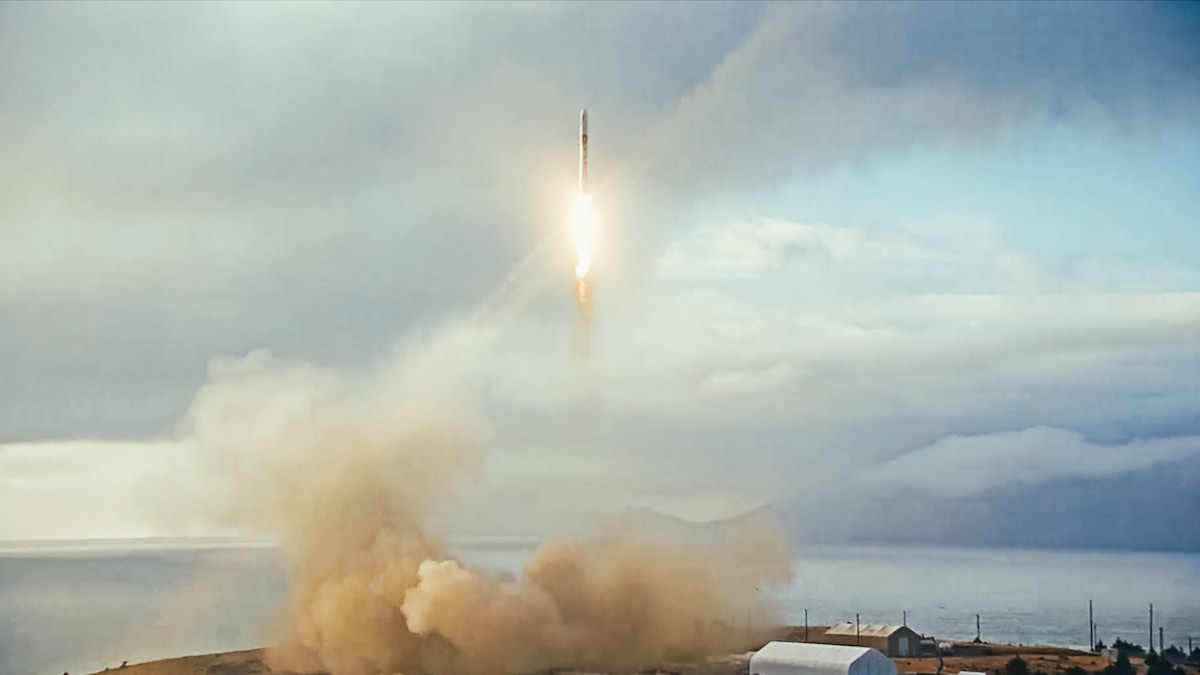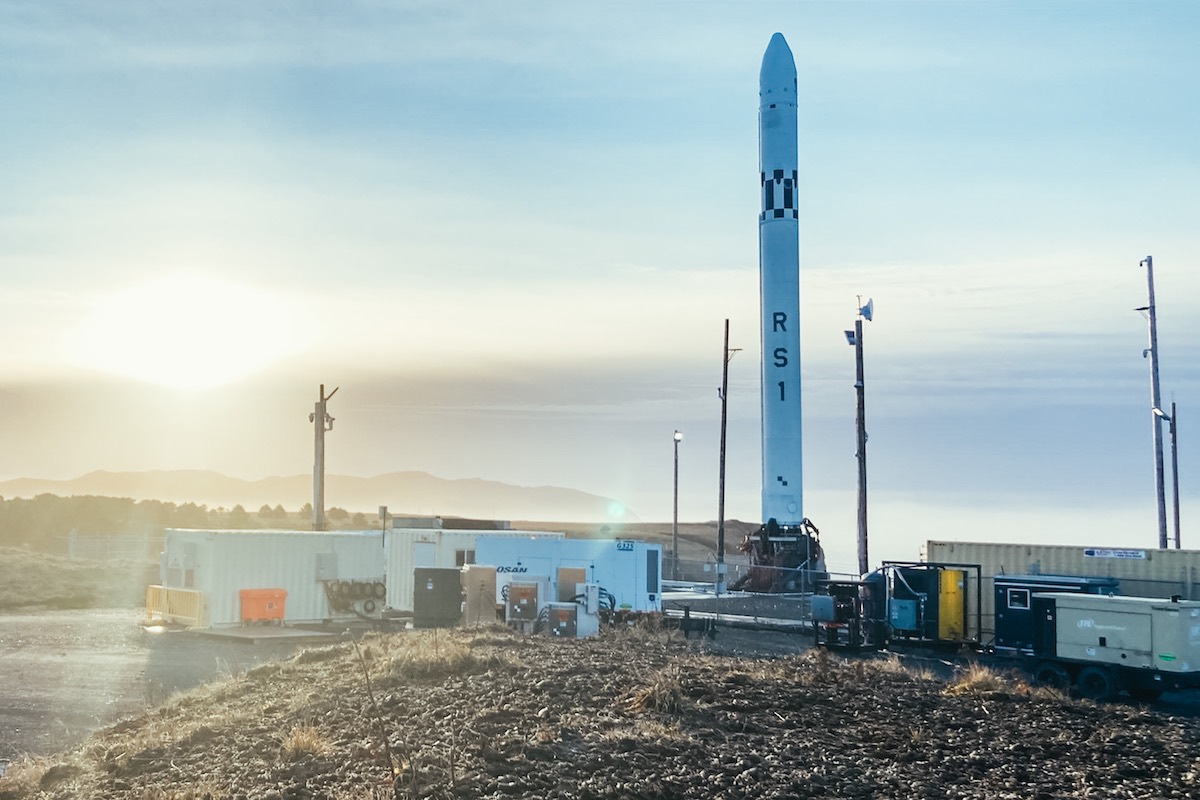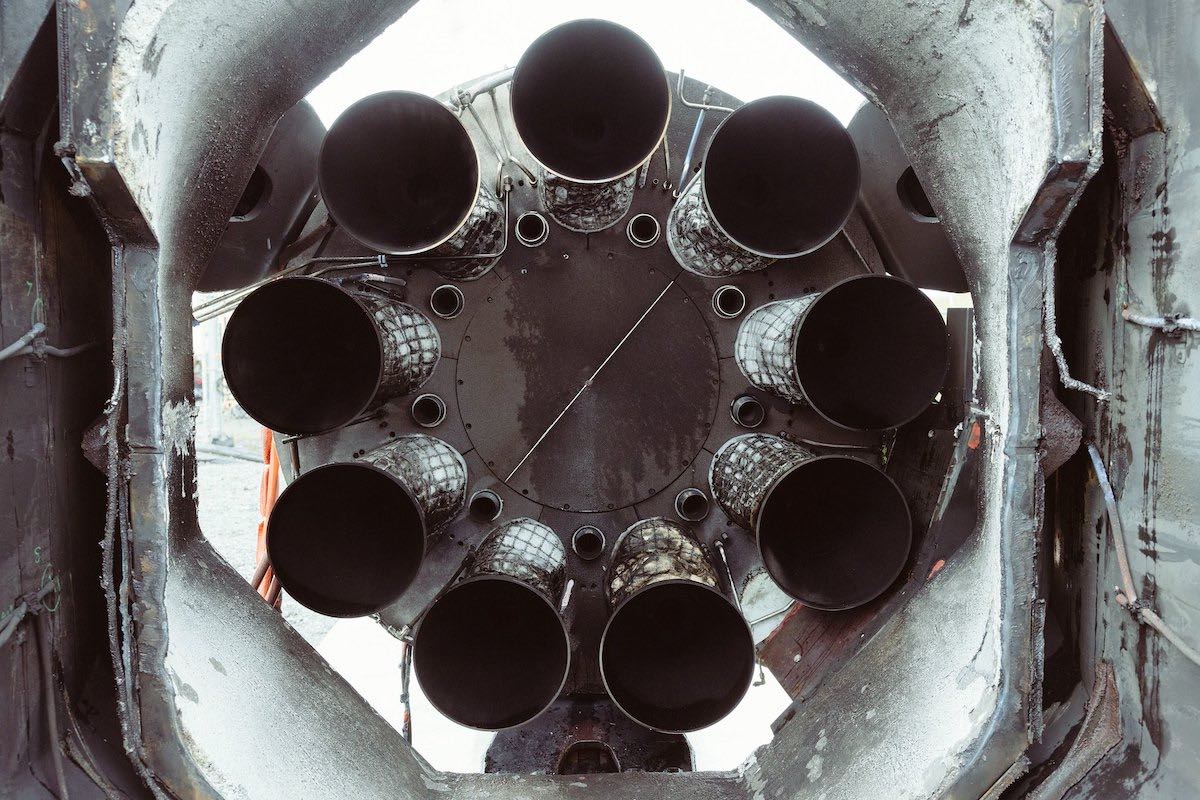
ABL Space Systems’ first RS1 rocket fell back on its launch pad at Kodiak Island, Alaska, shortly after liftoff Tuesday on the company’s first orbital launch attempt, destroying the rocket and damaging the ground facility, officials said.
“After liftoff, RS1 experienced an anomaly and shut down prematurely,” ABL tweeted Tuesday. “This is not the outcome we were hoping for today, but one that we prepared for.”
The 88-foot-tall (27-meter) RS1 rocket lifted off from Launch Pad 3C at the Pacific Spaceport Complex on Kodiak Island, Alaska, at 6:27 p.m. EST (2:27 p.m. AKST; 2327 GMT) Tuesday. The rocket was supposed to head south from Kodiak over the Pacific Ocean on an attempt to place two small satellites into polar orbit about 200 miles (300 kilometers) above Earth.
But the RS1 rocket faltered soon after launch.
“Early in today’s flight, all nine of RS1’s E2 engines shut down simultaneously,” ABL said. “RS1 impacted the pad and was destroyed.”
Launch failures are not unusual on inaugural test flights of rockets. SpaceX, Rocket Lab, Virgin Orbit, Astra, and Firefly failed to reach orbit on their first attempts.
“As expected in this scenario, there is damage to the launch facility,” ABL said. “All personnel are safe, and fires have subsided. We’ll plan our return to flight after investigations are complete. Thanks to our stakeholders and the space community for the expressions of support.”
ABL is investigating the launch failure, in coordination with the Federal Aviation Administration and Alaska Aerospace Corporation, which owns the spaceport on Kodiak Island.
The California-based startup is one of a new generation of commercial companies working on small satellite launch vehicles. ABL did not livestream the maiden flight of the RS1 rocket Tuesday, but provided occasional updates on the countdown on Twitter, then issued statements on the social media site after the launch failure.
We are chomping at the bit for Flight 2. More to come. pic.twitter.com/Gm7DyELq6C
— ABL (@ablspacesystems) January 11, 2023
ABL scrubbed several launch attempts since November due to technical issues and bad weather, including aborts during the engine startup sequence just before liftoff. The launch campaign followed a static test-firing of the RS1 rocket’s first stage and a series of fuel loading demonstrations at Kodiak.
The two-stage RS1 rocket is capable of placing a payload of nearly 3,000 pounds (1,350 kilograms) into a low-altitude equatorial orbit, or about 2,138 pounds (970 kilograms) into a 310-mile-high (500-kilometer) polar orbit, according to ABL.
Founded in 2017, ABL is headquartered in El Segundo, California, and is backed by venture capital funds and money from Lockheed Martin. ABL reported a valuation of $2.4 billion in 2021 during its most recent fundraising round, with a backlog of more than 75 missions, primarily from a bulk order of up to 58 launches from Lockheed Martin. ABL also has a contract to launch a NASA small satellite tech demo mission, and is one of 13 companies in NASA’s roster of providers for venture-class launch services.
The U.S. Space Force added ABL to its roster of 11 companies eligible to win contracts to launch the military’s small satellite payloads over a nine-year period.
After Tuesday’s launch anomaly, ABL said it will move forward with another RS1 test flight. “We are chomping at the bit for Flight 2,” the company tweeted.
The RS1 rocket’s lift capability puts it on the upper end of the range of new small satellite launch providers, slightly exceeding the performance of Firefly Aerospace’s Alpha rocket, which reached low Earth orbit on its second test flight Oct. 1 following launch from Vandenberg Space Force Base, California. Firefly’s Alpha rocket deployed its CubeSat payloads into a lower-than-expected orbit, and the small satellites soon re-entered the atmosphere.
Rocket Lab’s Electron booster, Virgin Orbit’s LauncherOne, and Astra’s Rocket 3 launch vehicle have smaller payload capacities than ABL’s RS1. Astra has retired its Rocket 3 vehicle and is now developing a larger launcher called Rocket 4.

ABL says a dedicated launch on its RS1 rocket costs $12 million, more than the price of a Rocket Lab mission but below the price of a larger rocket such as SpaceX’s Falcon 9. The scale of the RS1 rocket is “small enough to simplify development, manufacturing, and operations, but large enough to deliver a per-satellite launch cost at a fraction of a smaller vehicle,” ABL says.
The company says its launch operations rely on a “containerized launch solution,” allowing it to deploy ground support equipment and rockets to different spaceports with minimal pre-existing ground infrastructure. ABL plans to eventually launch missions from Cape Canaveral, Vandenberg Space Force Base, and the United Kingdom.
For its first test flight, ABL’s RS1 rocket was supposed to fly south from Kodiak Island over the Pacific Ocean with two small shoebox-size CubeSats for OmniTeq, a Texas-based company that provides rideshare launch services with plans to deploy a constellation of small satellites to provide maritime communications services.
The two OmniTeq satellites on the RS1 rocket’s first orbital launch attempt were designed to test the operation of OmniTeq’s VariSat high-frequency communications payload, according to ABL. The mission was also expected demonstrate OmniTeq’s Equalizer deployer, a mechanism designed to eject CubeSats into orbit on small satellite rideshare launches on multiple types of rockets.
The satellites had a combined weight of less than 50 pounds, or about 22 kilograms, according to a Federal Communications Commission filing from OmniTeq. The payloads were destroyed with the RS1 rocket during the launch failure Tuesday.
The RS1 rocket’s first stage was powered by nine kerosene-fueled E2 main engines that ignited at T-minus 2 seconds and throttled up to produce more than 133,000 pounds of sea level thrust. The first stage was supposed to fire for about two-and-a-half minutes, then jettison to fall into the Pacific, giving way to an upper stage powered by a single E2 engine generating about 13,000 pounds of thrust.
The rocket’s payload fairing would have jettisoned more than three minutes into the flight, and the upper stage engine was programmed to shut down nearly 10 minutes after liftoff. Then the two OmniTeq satellites were expected to deploy from the rocket 12 minutes and 14 minutes after launch.

The ABL launch anomaly Tuesday was the second failure of a small U.S.-built commercial satellite launcher in less than 24 hours. Virgin Orbit, the smallsat launch company partially owned by Richard Branson, suffered a failure of its air-dropped LauncherOne rocket Monday.
Virgin Orbit’s failed launch was based out of Spaceport Cornwall in the southwestern part of England, where the company’s Boeing 747 carrier aircraft took to head over the Atlantic Ocean for release of the 70-foot-long (21-meter) LauncherOne rocket.
The second stage of LauncherOne failed a few minutes after the carrier jet released the rocket southwest of Ireland. The rocket and its nine small satellite payloads re-entered the atmosphere burned up near the Canary Islands.
Email the author.
Follow Stephen Clark on Twitter: @StephenClark1.
